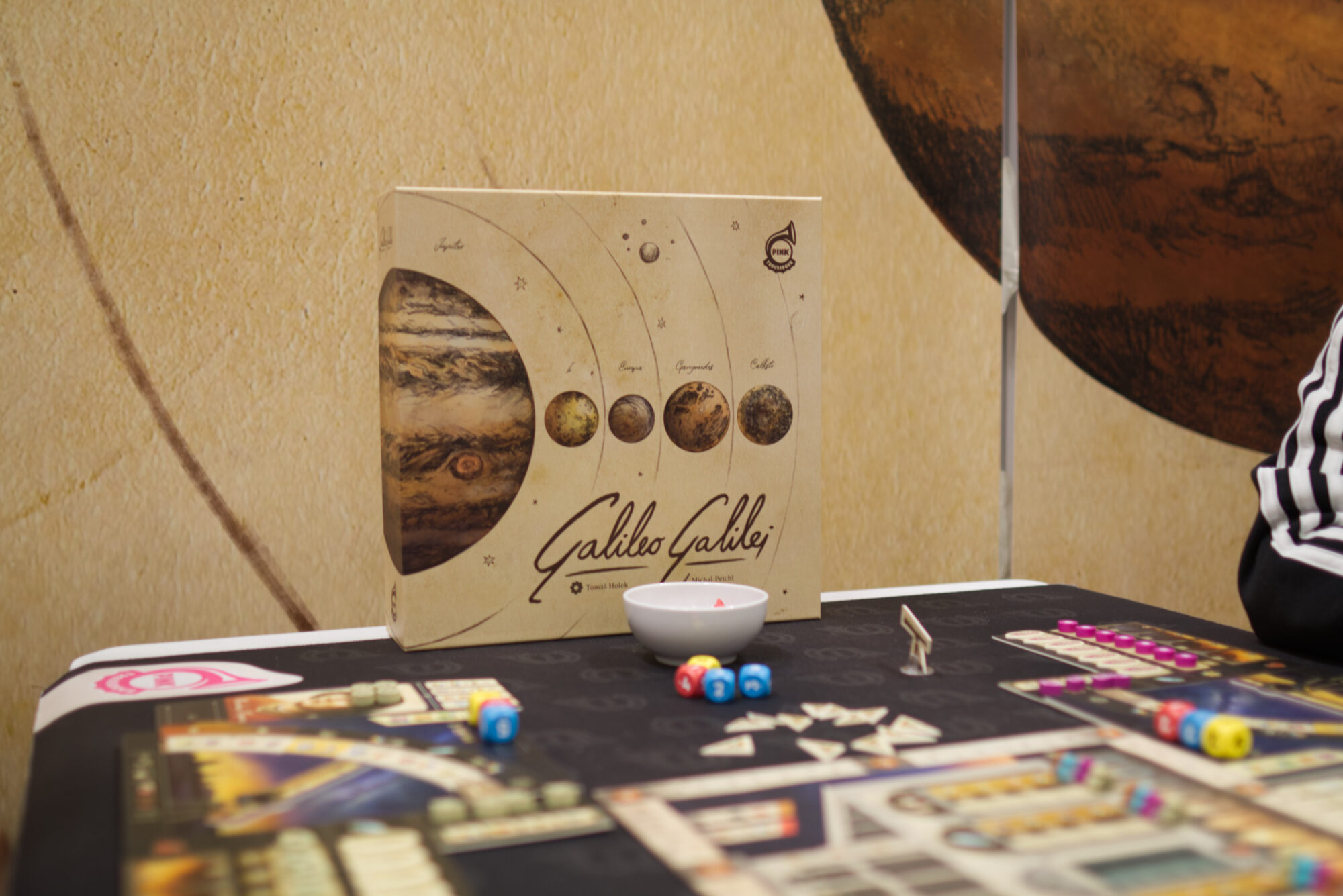Lately, I’ve gotten a bit tired of the typical modern Euro: mechanically solid, great art, but no real theme or story being told. In the last years, I found myself wondering more and more often “why should I even be playing this?” as combo-heavy, low-interaction games kept coming to my table that wouldn’t produce any memorable moment at all that would distinguish one play from the next.
Going into SPIEL Essen 2024, I therefore wasn’t particularly excited about any of the announced Euro-game titles. However, I noticed something was afoot when I played SETI: Search for Extraterrestrial Intelligence for the first time on the eve of the show opening. The reviewer in me saw all the familiar Euro-elements, but the gamer in me didn’t care. I didn’t analyse the mechanisms and see how I could exploit them, I wanted my probe to land or my funding to improve and cursed when I had yet again missed the opportune launch window for my probe. When later I played Tea Garden – also by newly-published designer Tomáš Holek –, it was a similar situation. I didn’t care that some serious lack of sleep made me play badly, I wanted my boat to move and figure out where I could get enough good-grade tea leaves from.
Something was different about these games. I was curious to see if there was a pattern, which made me also demo Tomáš’ third design this year, Galileo Galileo. And again, I cared about a lot of things: the role of the inquisition, the swivelling telescope, the tiny details in the art that enforced the theme … but not really how I was doing or what mechanisms had been combined to create the game. How was it possible that a single designer virtually comes out of nowhere, lands three big games with three different publishers, and all do better theme integration than I had seen in a while? So we sat down at an all too loud cafeteria at SPIEL to chat …
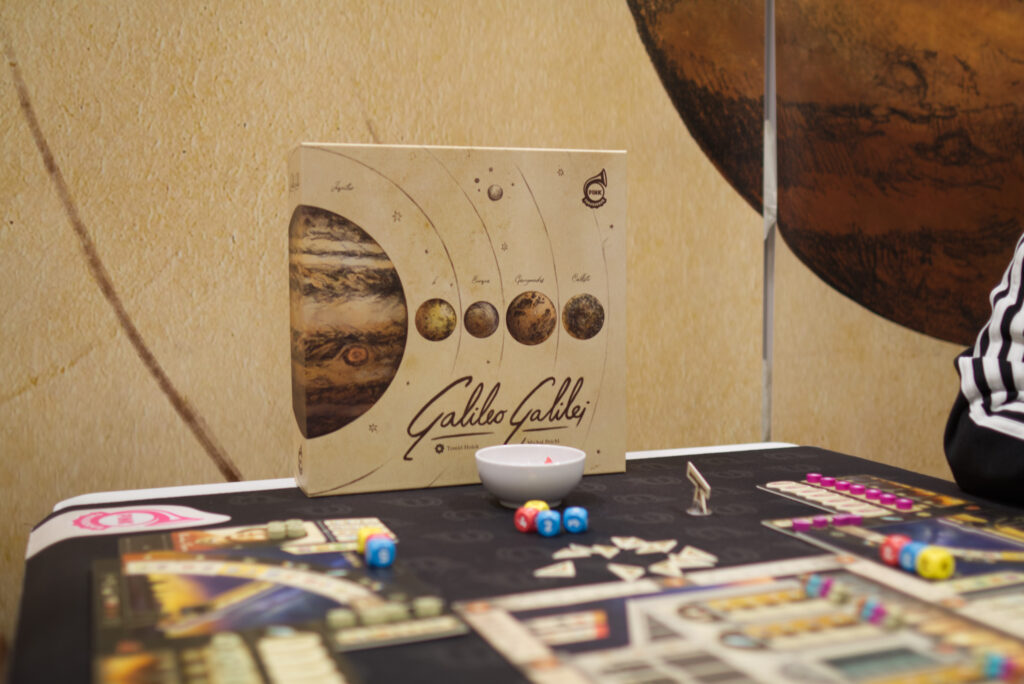
I noticed something with all of your three games. During all three plays, I was thinking the same thing: why do I enjoy playing them so much? I have played and reviewed tons of Euros and with most of them by now I’m like “oh, it’s that mechanism again, I don’t care, whatever”. I just played Galileo Galilei and I was like “I want to get this discovery”. The mechanics went out of the way and I suddenly had fun again [with a Euro].
When you do design, how do you make it that the game is fun and the mechanics are not so obvious?
I always try to start with a theme I like a lot. This is why I started with these three games because I’m a big enthusiast of astronomy and space and science. And also tea because I’ve been drinking tea for fifteen years. I have tons of tea at home from China. For my first games, I picked the themes I liked the most.
My very first game out of the three was SETI. I started it six years ago and I did a lot of research before starting designing it because I wanted the players to feel the theme in this game. So I tried to find a mechanic that was the best for showing it. For example [in SETI, it’s] the rotating solar system and in Galileo the moving telescope.
The first thing I was thinking about in Galileo was the rotating telescope because I wanted to do a game about Galileo Galilei – or astronomers from this era – and I was thinking for many weeks about what would be the main mechanic. I always remembered the feeling when [I did observation] because I have a couple of telescopes at home and I always said what I do when I observe is moving my telescope, constantly. You always need to move and you observe something like some galaxy or some nebular or planets. During a night, you observe like 15-20 objects because you need to find them [first]. I don’t use [telescopes where the] computer is tracking along. I always want to find [things] myself because it’s not about observing, it’s about finding the object. And it takes a couple of minutes to find something. Sometimes it’s easier, sometimes it’s harder because you need to find some specific stars and then you find the object.
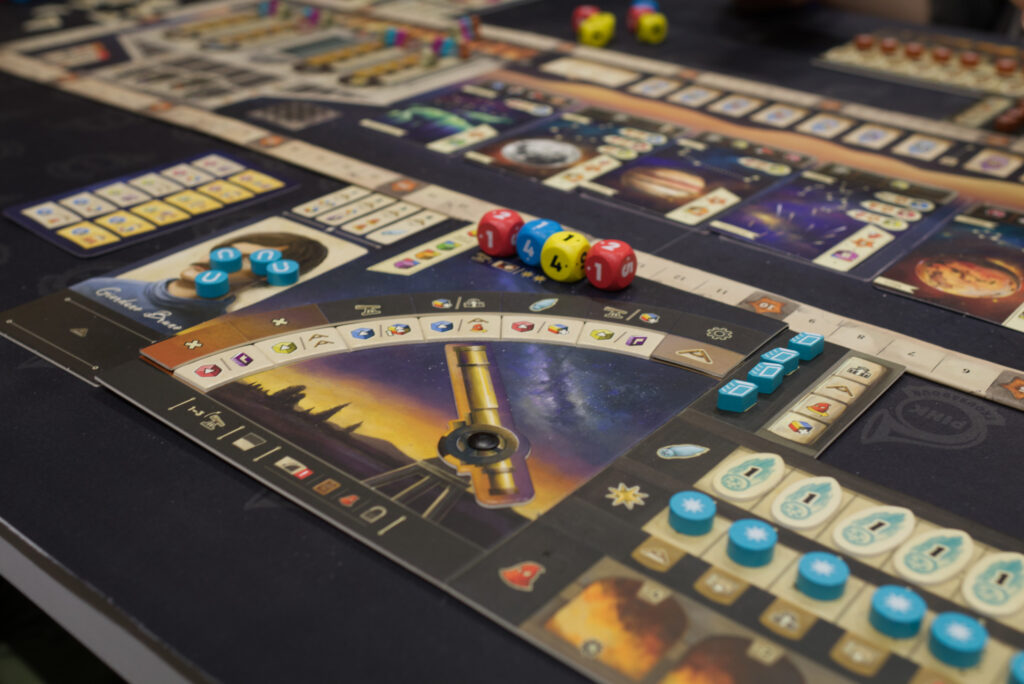
So you enjoy the craft of it?
I enjoy the moving of the telescope, so I said this must be the main mechanic of the game. The movement was [upwards and downwards] and so I said there can be actions. There can be some moveable actions and then I invented this mechanic at the absolute beginning of the game.
In Galileo it’s basically pointing to the action. You could have also used it to to point to whatever you want to discover. Why this mechanism? It reminded me a bit of Ark Nova where you pick one action that gets worse [after use] and you also flip them to upgrade them.
I like to combine something, that is why there are two actions every time. I don’t know. I just had an idea and it felt good. I always try to find something that I like myself. When I play something, I always watch my feelings.
It’s a simple thing but moving this telescope … for some reason it’s fun. In the abstract, I know this mechanism is happening – you could have done it in multiple other ways – but just swivelling this crazy little telescope already injects fun into it.
How about the inquisition? It’s a touchy subject and it’s very important. I was surprised – also with the gorgeous artwork – they were almost comical to me. They look cute, you can manipulate them. What was your thinking behind them?
I think people in the first play are afraid of them but in the second game, they see that the inquisitors [jokingly] are not that bad.
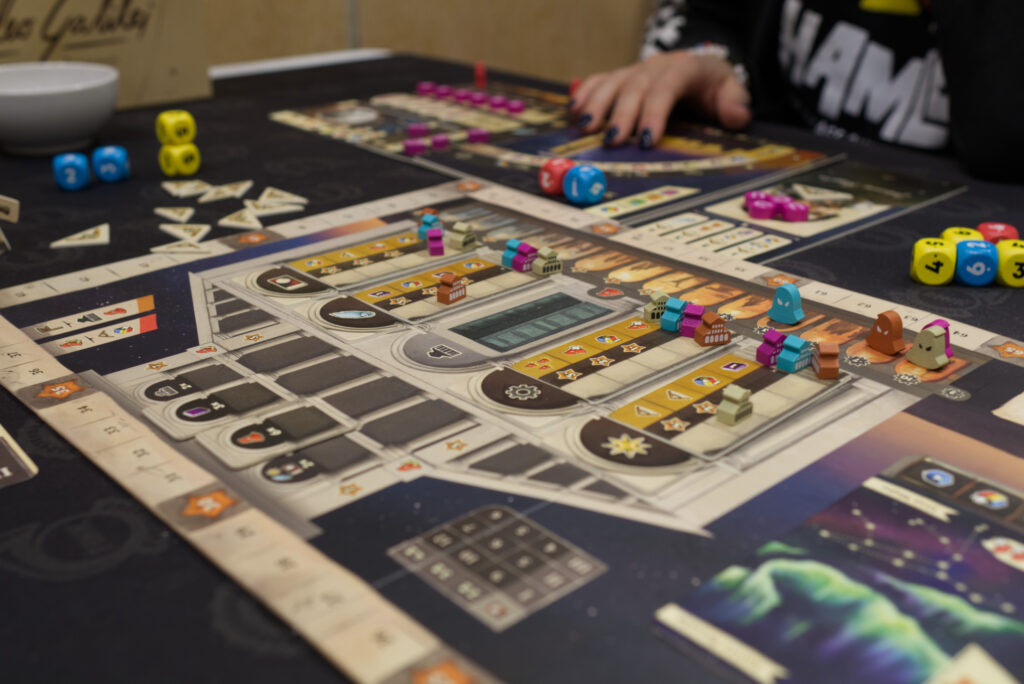
[Alex laughs] Even useful if you use them to your advantage.
In the third game, they start benefiting from them. You want them but not too much. And you always need to have some ways how to persuade them. The mechanic was there from the beginning because as before I started [with extensive] research before I started the game. I know a lot – I think – about this theme because I read a lot of books about astronomy. I do astronomy for like ten years, maybe more. I wrote all things to paper that should be in the game and the inquisition was probably the most important part in the lives of those astronomers. They were everywhere and they were [doing horrible things] to them, so I knew that they had to be here.
I had a little bit of a different mechanic in the beginning – visually – because the inquisitors were a card during the first prototypes. My friend Michal Peichl helped me developing the game and he is also the illustrator of the cover and all of the game. We developed the game together and he brought up the idea that [the player could] have a space on the player board. That made it possible to drop the cards and replace them with meeples, some wooden inquisitors on the board. They work the same but before were square cards that were played. Now it looks [much] better.
You take inquisitors and you can take as much as you want. But at one time when they are starting to move, you have a problem if you have a lot of them.
There are so many small, lovely touches in the graphics. On the player board, you basically just have a track that says how much the inquisition will punish you. But there is fire, like burning hell, when they are in the most negative space.
Michal, the illustrator, he also read the books. He studied the art of this era and he tried to find a lot of papers that Galileo did, that Bruno did, and he [found] this small little [details]. Like there are some stars [in the game] and they are in the style like Galileo did at the time for the most authentic art.
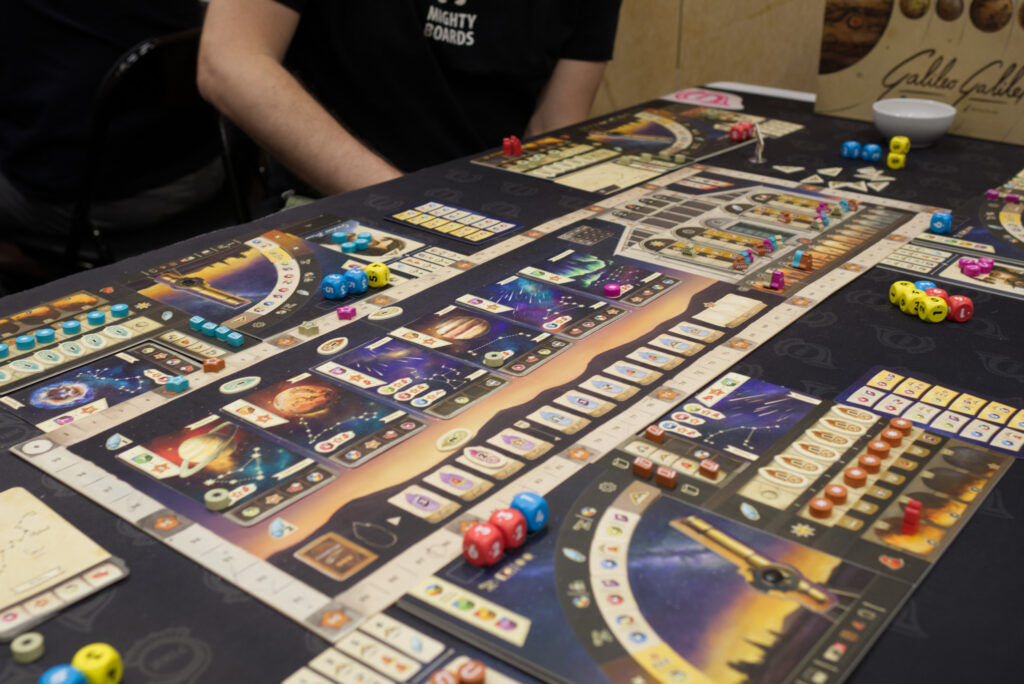
Let’s jump to SETI. How did you come up with the design of the solar system? I can imagine starting with three complete discs but you even have these cut outs that push probes and so on. Did you go through a lot of iterations?
Not that much because it was almost like that from the beginning almost six years ago. It’s like the second iteration. The first iteration was without the holes and without the shapes, it was like circles. But after a few months, I had an idea about [gravity assist] and that the shape could push your probe. I started to cut the shapes and since then it’s like 5 1/2 years and it is still the same. The shape is a little bit different but if you see the old and the new one, it’s almost the same.
I wasn’t sure where you got the idea from but the gravitational slingshot makes a lot of sense.
It’s the same with Galileo. I love Carl Sagan for example, he is a populariser of astronomy and science. I wanted to do a game about what he would like if he would still be alive. I saw his documentary Cosmos like a hundred times and I always said I would like to do something that should popularise space and science in astronomy.
I did prototypes like 10 years ago. I always try to learn first so I didn’t pitch or push it to publishers. Like from those 10 years, I have fifty prototypes.
[incrediulous] Why did you wait for so long?
Because I wanted to learn first rather than to pitch a bad game to a publisher. I wanted to learn about everything in the industry and how to do game design and so I met a lot of people from this industry in Czech Republic. I tested it with Vladimír Suchý and Vlaada Chvátil and a lot of designers. I learned a lot and I thought now it’s time to do a big game.
Wait! Let me ask you about that: What was it that said to you, okay, now is the time?
I started SETI in 2018 and in 2022 I showed it to the publisher. So I did it for four years. I was in CGE a couple of times and they gave me feedback and I didn’t push it so much. I wanted this game [at a point where I could say] now I enjoy the game and I think it is very good. After that I showed it to the publisher and said if you would like to publish the game, it’s yours.
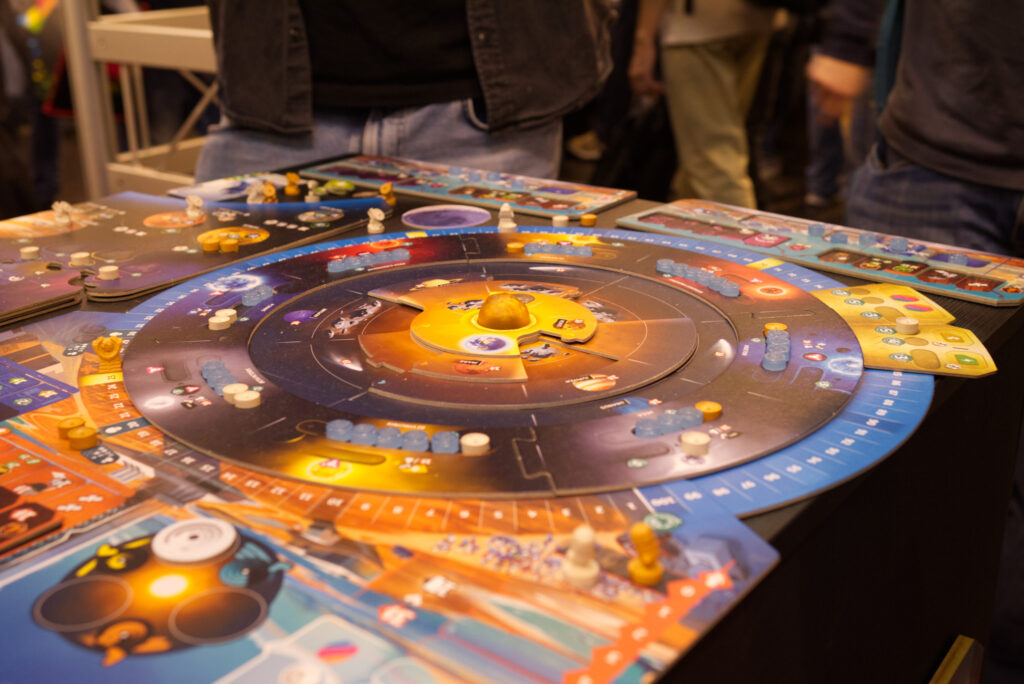
I thought maybe during COVID you had a lot of time to think about games …
During COVID I started Tea Garden and another game that will be next year.
You’re like a machine, bringing out so many games.
[Thomas laughs] [Coming back to the solar system], it’s since the beginning the same process. I think about it a lot so I know how it works, how they send the probes, how they use the gravitational slingshot, and all of these things. And I tried to put that into this mechanism. So they have to rotate, it can push you, it changes the constellations, the planets, there are some launch windows and a lot of opportunities.
Did you have the idea of putting the alien races in there from the beginning?
Yeah, from the beginning but not [to this degree]. For the first few years, I said “it’s science, I don’t want the alien races there”. But all of the players that tested the game said “I hoped that we would find something”. And I said okay, I put it here but it will be definitely based on science.
Is that also the reason why they basically only come in the second act of the game so you can first have this alien-free zone?
[laughs] Yeah. I always said before you find the alien species, it’s a science game based on science, as much as is possible. But after that it’s my imagination how I imagine alien species.
So for a lot of mechanisms, I could see how you might have come up with them, like the technology tiles. The one thing that made me curious was the publicity. Is there a thematic reasoning behind it or you just needed that mechanism as a buffer?
There is a reason behind it because you gain publicity when you do some discovery or when you pass through the planets for example. You take some pictures there, do some research. Every time NASA sends some probes, for example like Voyager. The Voyager flew to Neptune and Uranus and the outer solar system but there was a launch window and it visited Jupiter and Saturn and could do research. They take pictures and map something. And they use the gravitational slingshot so the probe is faster and uses less energy. And every time you do this in the game, it means NASA showed the pictures, so there is a lot of publicity.
And they get new funding.
They get new funding, new grants. You can spent this grant on the technology or cards.
Let’s jump to Tea Garden. As with the other games, I thought okay, it looks interesting, the graphics speak to me but I’m suspicious of just good graphics lately. So I played it and I was like why the heck do I like this so much? [both laughing] It’s a Euro, I have seen so many of those lately. The card combining mechanism is very interesting, but otherwise [it was very familiar mechanisms]. For some reason though, I finally care.
I drank a lot of tea while I designed this game. I have a good feeling when I get a tea, like the tokens of tea leaves. When I was designing this game, I had an idea of tea leaves and the degrees of quality or increasing the quality of the fermented tea. And I always had a good feeling when I took the tea leaves and I calculated what I could do with them. In the first prototype, I had too much of the leaves, so I changed it a little bit. Then I had too few of them, that wasn’t good. I found the right amount of tea leaves that you get and it was like … the feeling was good. And when I see that I feel good when I play it, I think it’s good [laughs].
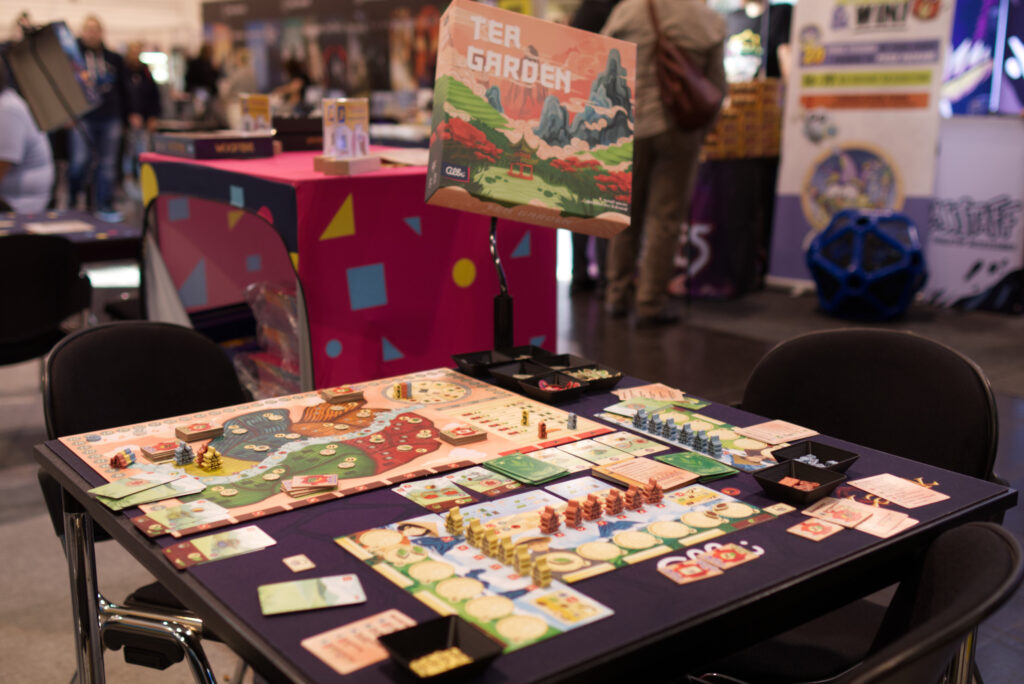
How do you do this balancing and playtesting? Are you playing it a lot solo? Or do you bribe your friends to play it?
Firstly, I play it solo and until I think it’s good enough to play it with my friends. I only play it with like designers, with people from the industry. So they give me a lot of feedback and very good feedback. After the first testing sessions, I change a lot and I think the game works better and better after each change. Because I play it only once every time. You play it, you test, I remove 10% of the game and bring another. And it works for me very well.
But first, I do 10-20 tests myself because when I bring an absolutely new prototype, there will be a lot of imbalance. So I do balance a little bit, and then we know the balance is good enough but we are focusing on more mechanics.
How long does it take you from the initial idea to finish a game and how many games do you work on in parallel?
SETI was six years, tea garden was four years but I worked on tea garden like two years probably. I started during COVID four years ago and in a few months I did a prototype and it wasn’t that good of a prototype. I had some problems there. So I postponed it for two years. and after that I have an idea, so continue.
Every time I don’t know how to solve some problem, I put the game on my shelf. Sometimes I will be thinking about it, then I have some idea – the idea can come every time, especially when I’m running. I run a lot. When I’m running, a have a lot of good ideas. Each time I’m at home after running, I write down some ideas or some mechanics for different games.
Galileo was – I think – the fastest because I designed the first prototype and it was two years, almost two years to this day.
Because you already had this design sensibility for the topic.
Yeah. And I didn’t stop working on it during this time. I focused on this game the whole two years. Because I do it full-time.
Or really, you are now a full-time designer? Congratulations
I work for [publisher] Pink Troubadour like as a developer but as a freelancer. And that’s 20% of my working time and 80% I work on my own designs. I have a lot of prototypes!
It’s a move that few people do. It’s pretty risky to become a full-time designer. What made you decide okay, I will do this full-time?
When I do something, I focus as much as I can and I know if I will focus absolutely all of my working time to this, the games will be better. If I do it half-time, it won’t get that successful.
What’s in the future for you? You said you already have some designs. Are you looking for commissions or do you rather want to continue with your own ideas? What do you see in the next couple of years for yourself?
I have a lot of prototypes in progress and I talk with other publishers. There are some very big games I think for the next two years. Next year I already have a big Euro-style game with a different publisher and I try to do some small games, like card games and something different. And maybe some Ameri-style games.
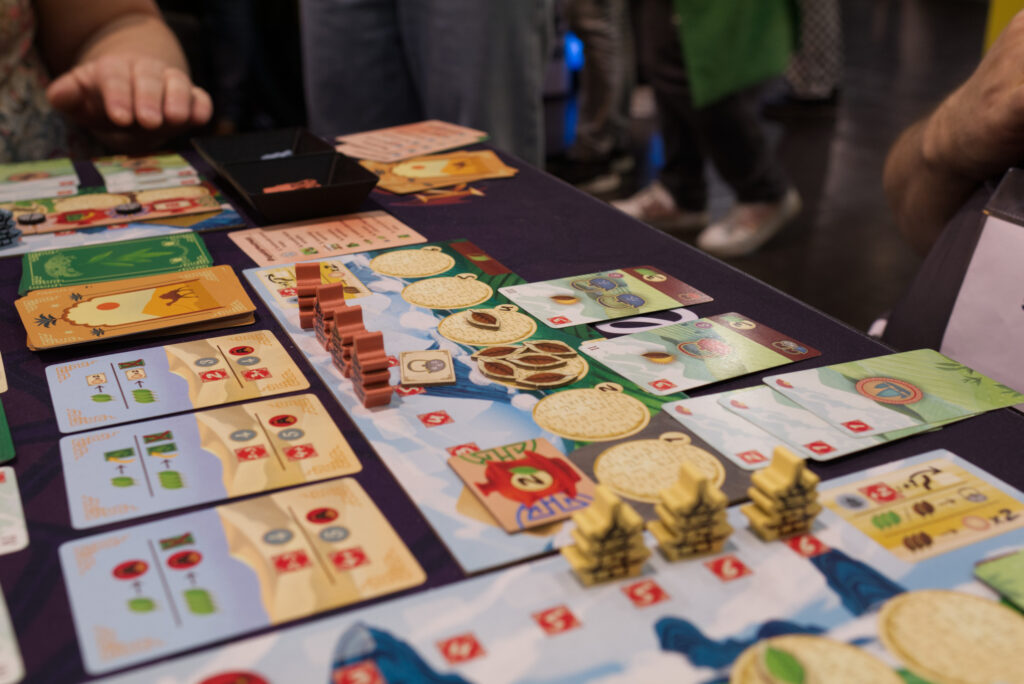
Do you have – I sometimes call it a white wale – this one big theme you want to make a game about but you haven’t found the right way yet? Or was it Galileo for you, your passion project?
My passion project was definite SETI and Galileo. And SETI especially, because it’s six years of work. I’d like to mention the cards in SETI because they are my favourite part in the game. There are 200 cards and each card is different and presents a real project from the past or from now or plans for the future, a real project about space exploration. We worked with 10 different illustrators! So each illustration, I said “I need to draw this probe near Europa Clipper and behind it is Europa which is a moon of Jupiter”. With each illustration, I said to the illustrator what I needed and it was a huge job.
And the flavour text! Milan Zborník from Pink Troubadour wrote for me all the flavour text. I told him what I needed for each card and he wrote this beautiful flavour text about the projects.
Do you have a tip for aspiring designers: you managed to get three different publishers to do big investments in you, big productions, all of those graphics. Was it just that the quality of the game was so good or did you build up contacts before? How did you convince the publishers to put so much money into [games of an unpublished designer]?
As I said before, I learned a lot. 15 years I did prototypes and I trashed 50 prototypes. After that I did prototypes that I thought were good enough to show to publishers and they saw the prototype and said we want this, we put money behind this. When you start and it’s your first or second prototype, it’s probably not enough because they see … that you didn’t do that many prototypes before. You probably need some more time to learn.
So you are proof hard work pays off?
Yeah, I have to say: if you want to do games, test games, do prototypes.
And throw out the first twenty?
Yeah, exactly.
Disclaimer: This is an edited version of a 30min conversation. Both were non-native English speakers chatting in a loud, crowded café at a big convention. So I cleaned up the phrasing quite a bit to make it more readable. Any mistakes are likely mine as editor and not Tomas’.
